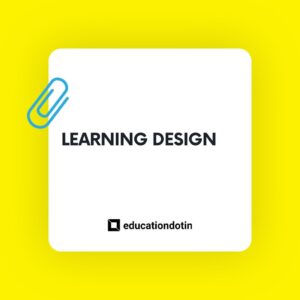Learning Design
Learning design is a critical process in education that involves the creation of educational materials and experiences that support and enhance the learning process. It is important to ensure that the learning experience is engaging, relevant, and effective in achieving its intended learning outcomes.
Bloom’s taxonomy is a widely recognized framework that outlines the different steps involved in the learning process. It provides a useful guide for educators and instructional designers to ensure that their learning design is effective and comprehensive.
The first step in Bloom’s taxonomy is remembering, which involves the recall of previously learned information. To achieve this, educators can use various memory aids such as repetition, mnemonics, or flashcards. The aim is to help learners retain information in their long-term memory.
The second step in Bloom’s taxonomy is understanding. At this stage, learners are expected to make sense of the information that has been presented to them. Educators can use various strategies such as concept maps, visual aids, or real-world examples to help learners connect new information to their existing knowledge and experience.
The third step in Bloom’s taxonomy is applying. At this stage, learners are expected to use the information they have learned in a practical way. This can be achieved through hands-on activities, simulations, or problem-solving exercises. The aim is to help learners apply what they have learned to real-world situations.
The fourth step in Bloom’s taxonomy is analyzing. At this stage, learners are expected to break down the information into its component parts and understand how they relate to each other. Educators can use various strategies such as graphic organizers, concept maps, or mind maps to help learners analyze information in a structured way.
The fifth step in Bloom’s taxonomy is evaluating. At this stage, learners are expected to make judgments about the quality or value of the information. Educators can use various strategies such as debates, discussions, or case studies to help learners evaluate information in a critical and reflective way.
The final step in Bloom’s taxonomy is creating. At this stage, learners are expected to use the information to create something new. This can be achieved through various activities such as project-based learning, presentations, or reports. The aim is to help learners demonstrate their understanding of the information and apply it in a creative way.
Overall, learning design is a crucial process in education, and educators and instructional designers should aim to incorporate various strategies that promote effective learning and help learners achieve their intended learning outcomes. Bloom’s taxonomy provides a useful guide for achieving this.
